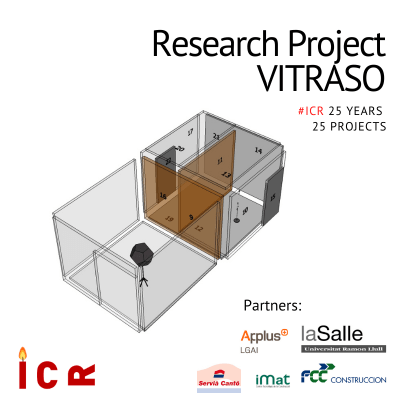Project 12: Research project in the construction sector – VITRASO
For those who are familiar with ICR's trajectory will know, that we have always found in research projects a source of knowledge that provides us the possibility to grow as a company and be more competitive in the market.
This is the case of the VITRASO research project, carried out in 2009.
The project is based on the need to improve and develop experimental and numerical calculation methods for the analysis and prediction of noise and vibration transmission paths in the building sector. On the one hand, these methods would make possible to identify and quantify sound insulation problems in existing buildings, and on the other, would improve predictions of vibro-acoustic transmission between enclosures in the design phase of new buildings, making possible more optimized designs.
ICR participated in that project along with various entities such as LGAI (APPLUS technological center), La Salle Ingeniería (Universitat Ramon Llull), Servià Cantó, S.A. FCC (Fomento de Construcciones y Contratas) and the Construction Technology Centre (Imat).
ICR defined and actively participated in the measurement protocol definition and also in the various tests carried out in the transmission chambers of the APPLUS facilities, in order to locate and quantify the real primary and secondary transmission paths, between the transmitter and receiver enclosures in different configurations experimentally, which at the same time allowed us to compare those values with the results obtained from the calculation models.
In this project, SEA (Statistical Energy Analysis) type calculation methods were used, incorporating also hybrid methods for the medium frequency range, such as finite elements mixed with boundary elements (BEM-FEM) and finite elements (FEM) at low frequencies. Sound insulation predictions were also carried out, including the analysis of lateral transmission paths according to the UNE-EN12354 standard, using the dBKAisla insulation prediction software.
Finally, both, the calculation and experimental methods, extracted from the project, were applied in real case scenarios, specifically in a private residence and a public school, resulting in a successful adaptation of the methodology to the building sector.







